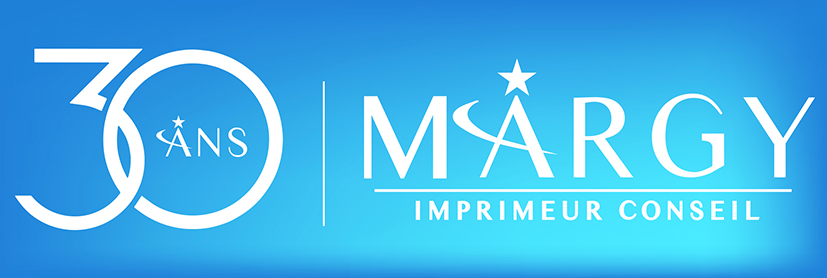Discover the meaning of colours and which ones to use depending on your sector of activity, so that you can create communication materials that reflect your company.
Choosing the right colours is essential for conveying an image that reflectsyour company’s identity. Colours influence the public’s perception of a brand or service. In this article, discover the meaning of each colour in general, and then by sector of activity, as well as valuable advice for perfecting your corporate digital marketing policy.
Corporate marketing: choosing the right colours for your advertising impact
To define the colour code for your company‘s graphic charter, ask yourself what image you want to convey and what the company’s values are. Based on this, refer to the meaning of the colours to choose those that best match thecompany’s visual identity.
Blue :
Blue is synonymous with calm, serenity, confidence and clarity. It can also symbolise freshness.
It is therefore often found in the fields of mass distribution, aeronautics, IT, new technologies, the environment, tourism and well-being.
Red:
It can have several meanings, such as compassion, evoking warmth, or power, it can signify friendship or knowledge.
This colour is mainly used in the restaurant sector, but can also be found in luxury brands, fashion, sport, the media, gastronomy and wine, or humanitarian organisations.
Yellow:
Yellow expresses joy, warmth, creativity and vitality.
It is mainly found in the tourism, agri-food, insurance, credit and art sectors.
Violet:
Violet is one of the secondary colours, conveying an image of peace, delicacy, friendship, intelligence or meditation.
It is mainly used in the fields of art and culture, luxury goods, music and education.
The colour green:
Green is present in a large number of sectors. It expresses calm, hope, relaxation, nature, discovery, travel and ecology.
It is therefore favoured in the fields of tourism, beauty and well-being, organic farming and the environment.
Orange:
The colour orange symbolises happiness, creativity, optimism, communication, tonicity and ambition.
It is the star colour for companies specialising in leisure, sport, communication, transport and agri-food.
Brown:
Brown evokes nature, softness and tradition, and also has the advantage of expressing neutrality.
It is present in culture, history and education, the environment, confectionery and luxury products.
Pink:
Pink is the colour par excellence of femininity, romance and happiness. It also expresses sweetness, deliciousness and youth.
Gold:
Gold is synonymous with wealth, elegance and fertility.
It is used in confectionery, luxury goods and perfumery. It can also be found in the financial sector, in banks and credit institutions.
Grey:
Grey represents calm, gentleness, respect and neutrality.
It is widely used in the construction, design, education and IT sectors.
Black and white are not colours, but what do they mean?
Black is a symbol of elegance and sobriety, expressing both rigour and mystery. It is used in film, art, luxury goods, photography and computer graphics.
White is indisputably purity, innocence and sobriety. It symbolises marriage, cleanliness, well-being and peace. It is used in the fashion, luxury and renewable energy sectors, in the press and media, and also in the world of weddings, beauty and well-being.
In the age of digital transformation, what colour code should you adopt for your company’s communications?
If you’re looking for a new approach to marketing communications, or if you need advice on launching your business, you can consult our online brand marketing offers.
In any case, remember that warm colours are best suited to energetic and creative profiles, while cool colours are better suited to underlining professionalism and calm.
Apply a few simple rules, such as harmonising colours and maintaining a certain unity across your various communication media.
In conclusion, don’t neglect the visual aspect of colours when designing your advertising. They have a real impact on the public’s attention and perception.
Other articles to read :
 01 44 52 02 02
01 44 52 02 02
